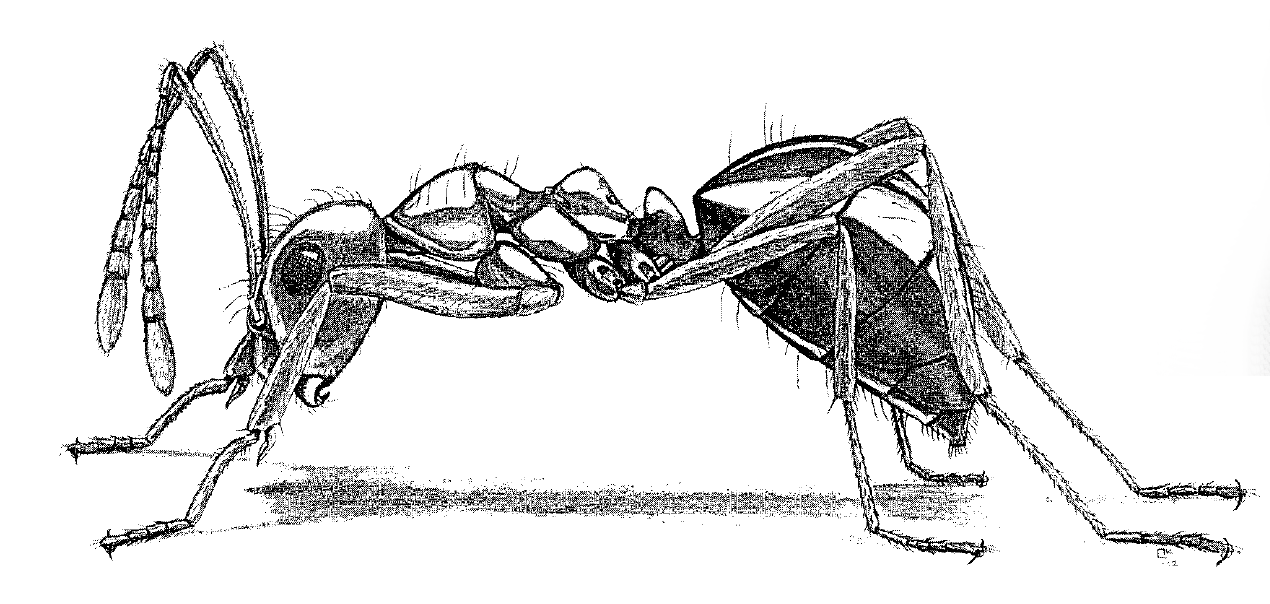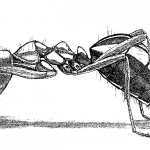 Prenolepis imparis image provided by
Prenolepis imparis image provided by One of the earliest ants to appear in the spring, it prefers cooler temperatures for foraging than most of our ants. This common species was posthumously described by Thomas Say ( 1787-1834), the father of American entomology, in 1836. The species name refers to “the great disparity in color and magnitude between the male and female,” which could be said of nearly all ants.
“This ant is predominantly nocturnal but is often seen through the day during cool or cloudy weather
or in damp shaded situations”. This species is noted for its preference for cool temperatures and tolerance of temperatures near freezing, often being active above ground in the winter. There is a lull in activity during the summer
Workers were found foraging on ground, tree trunks, and on foliage in woods. They were often
seen in feeding trails. Repletes (workers with extended gasters from “tanking up” on fluids) were seen fairly commonly. See Wheeler ( 1930) for illustration. Burrill & Smith ( 1919) describe the gait of these repletes as having “the appearance of swaggering like a drunken man.”
Colony Organization: Colonies are moderately large, normally with 1,000 to 2,000 adults and usually
a single queen (see Talbot, 1943a for details}, although Holldobler & Wilson report multiple queens and a maximum colony size of 10-3000.
This is one of the earliest ants to conduct their nuptial flights in the spring. These reproductives matured the previous year and overwintered in the nest.
Size
Nuptial Flight Dates
Habitat
Food
Behavior
Nesting Information
Verified Locales (counties)
Adams, Allen, Ashland, Ashtabula, Athens, Auglaize, Belmont, Brown, Butler, Carroll, Champaign, Clark, Clermont, Clinton, Columbiana, Coshocton, Crawford, Darke, Defiance, Delaware, Fairfield, Fayette, Franklin, Fulton, Gallia, Geauga, Greene, Guernsey, Hamilton, Hancock, Hardin, Harrison, Henry, Highland, Hocking, Holmes, Huron, Jackson, Jefferson, Knox, Lake, Lawrence, Licking, Logan, Lorain, Lucas, Madison, Mahoning, Marion, Medina, Meigs, Mercer, Miami, Monroe, Montgomery, Morgan, Morrow, Muskingum, Noble, Ottawa, Paulding, Perry, Pickaway, Pike, Portage, Preble, Putnam, Richland, Ross, Sandusky, Scioto, Seneca, Shelby, Stark, Summit, Trumbull, Tuscarawas, Union, Vinton, Warren, Washington, Wayne, Williams, Wood, Wyandot,


